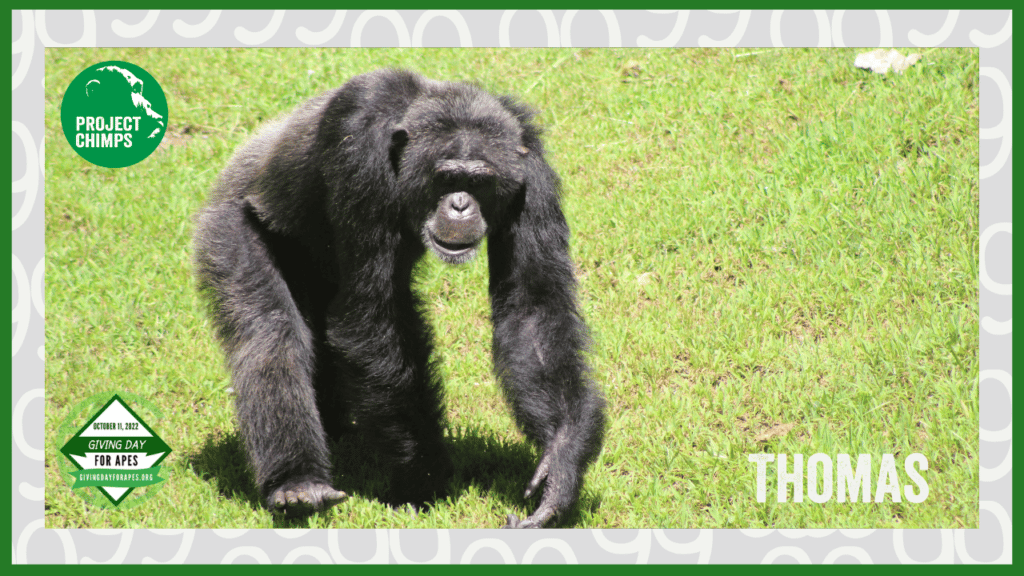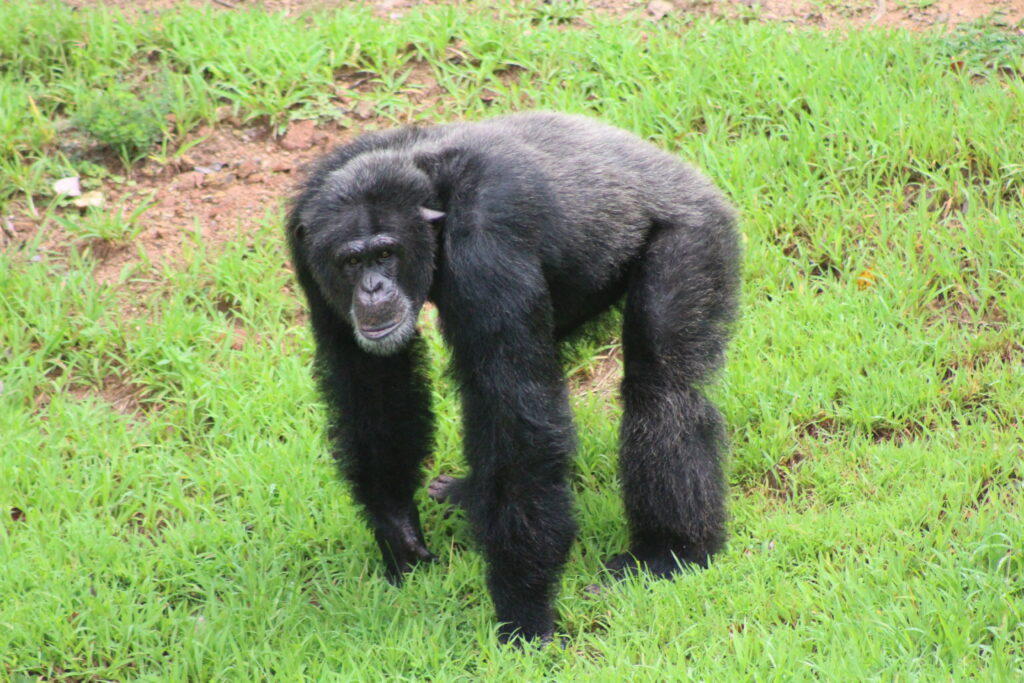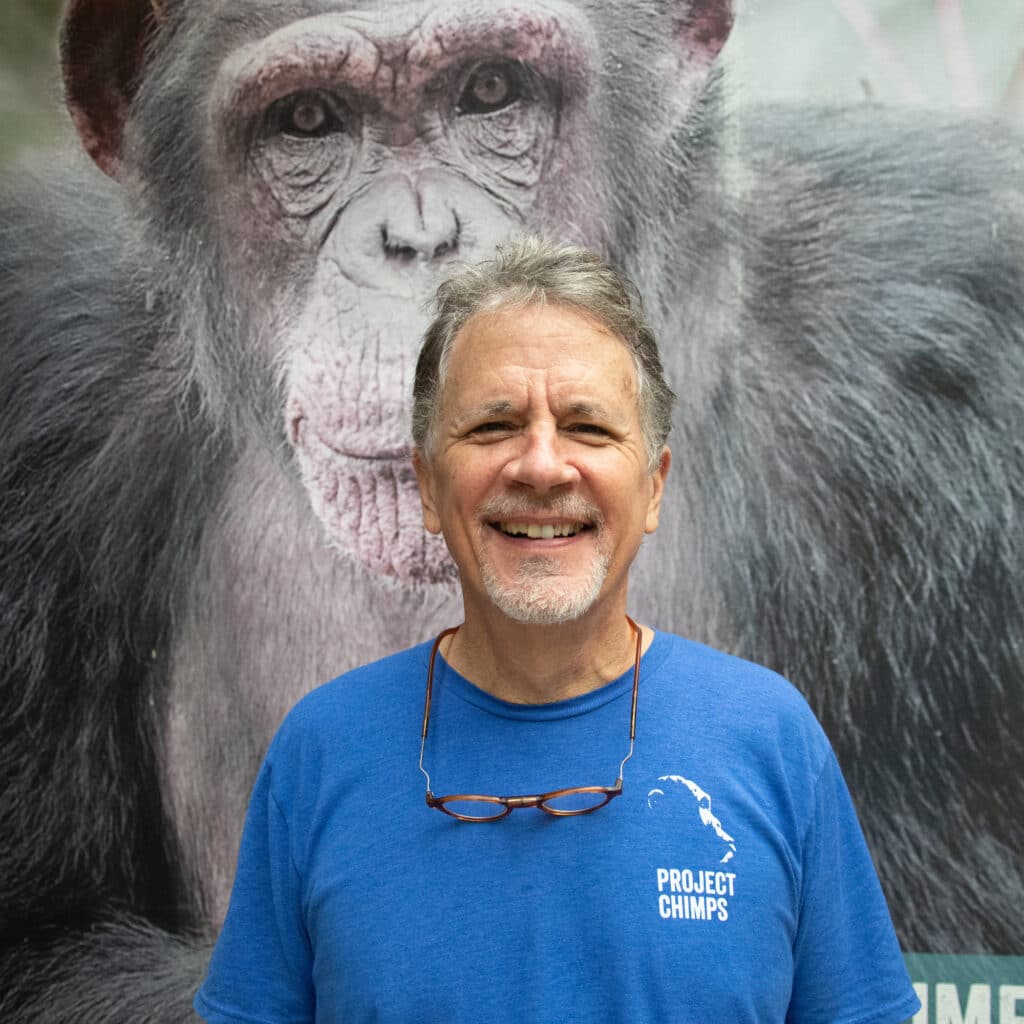
Meet Thomas – large, long and lanky

By James Haworth
At 150 pounds, 16-year-old Thomas is a large chimp. “He’s got a long, lanky build—more like a bonobo,” says caregiver Fred Rubio, “and a big patch of gray hair on his back, like a silver back gorilla.” Thomas is emerging as one of the more dominant and respected chimps in his group, says Fred, who holds a Masters in Primate Behavior from Central Washington University.
Momma’s Boy
Thomas’ mother, Kassie, 27, also lives at the sanctuary. She arrived in November 2019 and lives in the Chimps Ahoy villa.
She’s also a very large chimp, larger even than many of her male counterparts, and the most dominant female in her group. In the wild, chimp children often inherit the ranking of their mother, during the long period of maternal care typical of chimps. Since Kassie and Thomas both lived at the lab, and were probably separated at his birth, it’s more likely that Thomas’s ranking in the group is due to his impressive size.
Hide and Seek
“Thomas is easy to pick out in a crowd,” says Fred. In chimp care, it’s helpful when a chimp is easily recognized. Before Project Chimps staff enter a space previously occupied by chimps—to clean a room or make a repair, for example—two caregivers must independently confirm that each of the chimpanzees are in another secured area.

It’s not enough to just count the chimps, since they can dart around with surprising speed, hide behind structures, and get into knots of chimpanzees. Each chimp must be positively identified. To be qualified to identify chimps, a caregiver must pass three tests, correctly identifying each chimpanzee each time. It can take a month or more for a new staff member to learn to identify a group of 15 to 20 chimps. Thomas, however, makes the challenge a little easier: “We recognize Thomas immediately—his legs and arms are so darn long!”
Meal Time
Thomas is “enthusiastic at the hopper,” or the feeding chute where caregivers pass fruits and vegetables to the chimps. In other words, Thomas is the first guy up and ready for his meal to be handed through the mechanism. Still, Fred says Thomas isn’t especially assertive. “He doesn’t want to start a fight. He’ll yield to whoever wants it more.”
Thomas might not be as generous when it comes to the “fishing tubs,” or plastic tubs of water placed just outside the steel mesh fencing as part of the enrichment rotation. Peanuts, in their shell, float on the surface of the water, while chimps use plastic straws to coax them close enough to grasp with their fingers. “Peanuts are high enough value that the chimps will put in the effort,” says Fred, adding with a laugh, “They wouldn’t fish for kale.”
Thomas’s caregivers agree that he’s a sweet boy. He likes to play and engage, bouncing and dancing to catch a caregiver’s eye. Fred confirms, “Thomas is easy to enjoy.” As chimps in captivity can live to an age of 60 or more, this large chimp may be with us another 45 years. We’ll look forward to enjoying each year!
Show your support for Thomas and his 95 chimp friends by making a donation for Giving Day for Apes today!

